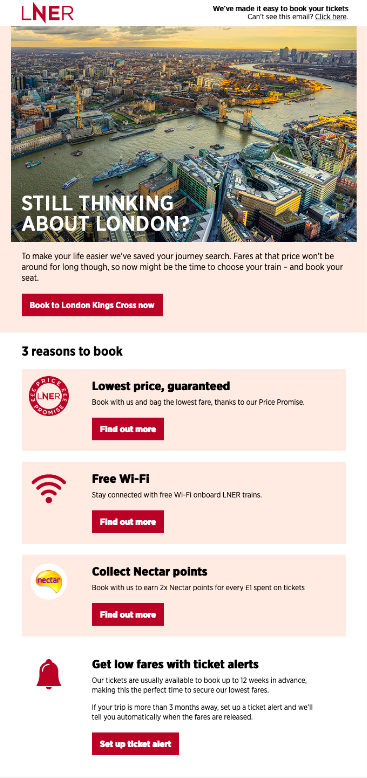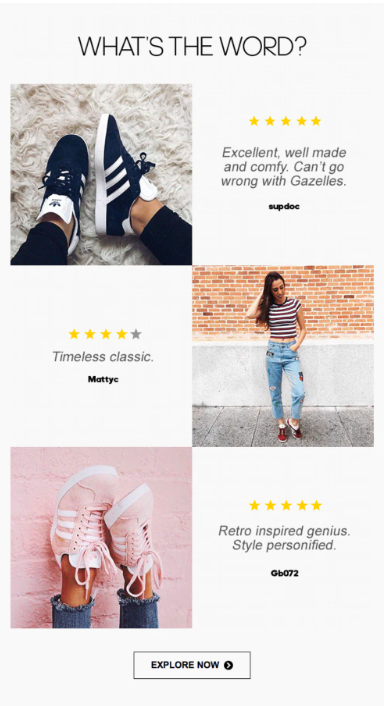
How to write abandoned cart emails that convert

Abandoned carts are incredibly common in online retail, with customers abandoning around 70% of carts before they ever checkout.Super frustrating! But, with the right know-how, there’s ample opportunity to recover those carts and re-engage with potential customers.
In this blog post, we will guide you through the process of reaching out to customers who abandoned their carts using email marketing techniques that can effectively convince customers to return and complete their purchase.
What is an abandoned cart?
In the world of e-commerce, an abandoned cart is when a customer adds products to their virtual shopping cart but leaves the website without completing the purchase. It’s like strolling through a supermarket, filling your cart with goodies, and then abruptly abandoning it in the middle of the aisle, hot-tailing it to the exit.
How to recover abandoned carts
Even the very best e-commerce stores have abandoned carts. You can strive to reduce the number of abandoned carts by optimising your website’s user experience, simplifying the checkout process, and addressing any concerns that may discourage customers from making their purchases, but even with the best efforts, some rate of cart abandonment is inevitable.
It’s not all doom & gloom, though! The good news is that when a customer abandons their cart, it means they showed genuine interest in your products but, for various reasons, decided not to go through with the purchase. With the right methods, you can recover that sale. Reasons for abandonment can vary from high shipping costs, complicated checkout processes, distraction, or simply being undecided about the purchase, so it’s important you address these where you can.
To recover potential sales, one of the easiest methods is to send targeted emails, known as abandoned cart emails. These emails remind customers of the items they left behind, provide incentives, and encourage them to return and complete their purchases.
By reaching out to customers who abandoned their carts, your business can re-engage with them, offer assistance, and potentially convince them to move further down the sales funnel.
Crafting abandoned cart emails
Abandoned cart emails typically include personalised messages, product images, enticing offers or discounts, and clear call-to-action buttons. The goal is to capture the customer’s attention, reignite their interest, and address any concerns or objections they might have had. So let’s take a closer look at how you can create abandoned cart emails that convert:
Grab attention with compelling subject lines:
Picture this: your customer’s inbox is a sea of unopened emails. Hundreds, maybe thousands, of emails lie unread in front of them. Your email subject line is the first thing your customers see, so you should make it attention-grabbing to ensure the email will get opened.
Use personalisation, urgency, or a hint of curiosity to push the recipient to open your email. For example, “Don’t miss out! Complete your purchase for an exclusive discount” is a fairly obvious one. Or, depending on your business, you can get creative, use humour, and pique their curiosity. How about something like: “Hey, we missed you! Your cart is jealous of all the fun we’re having!” Check out this blog post from Klaviyo to get more great subject line tips and examples.
We’ve found subject lines under 35 characters increase open rates by up to 24%!
Remind them of what items they left behind:
Immediately after capturing their attention, remind customers of the items they left behind in their cart. Include a clear and visually appealing image of the product, along with its name, price, and any other relevant details. This reminder should trigger their memory and reignite their interest in the purchase.

Image courtesy of: Really Good Emails
Highlight the benefits and unique selling points:
Reiterate the product’s key benefits and unique selling points to remind customers why they wanted it in the first place. Emphasise how the product can solve their problem or enhance their life. Use persuasive language and focus on the value they will gain by completing the purchase.

Image courtesy of: Really Good Emails
Create a sense of urgency:
People often need a little push to take action, so give them a friendly shove. Create a sense of urgency by emphasising limited availability or a time-limited offer in your emails. Use phrases like “Limited stock available” or “Offer expires soon” to convey the feeling of limited stock.
Loss aversion is a well known phenomena in e-commerce marketing – when people will go to great lengths not to lose something they view as a gain. Most often, time-based deadlines coupled with extra offers or signals of low stock work the best. It’s the ‘fear of missing out’ phenomenon at its best!

Image courtesy of: Really Good Emails
Provide social proof and testimonials:
Customers often seek validation from others before making a purchase. Include social proof such as customer testimonials, reviews, or ratings to build trust and credibility. Showcasing positive experiences from satisfied customers can alleviate any doubts and encourage them to complete their purchase.

Image courtesy of: Really Good Emails
More tips
Every abandoned cart email needs a compelling copy and an easy way to get back to the cart or at least a display of the items that were abandoned. Beyond that, here are a few more best practices and tips to pair with your abandoned cart email strategy:
Simplify the checkout process:
Make it as easy as possible for customers to complete their purchase. Include a prominent and visible call-to-action button (CTA) that leads directly to their shopping cart or checkout page. Eliminate unnecessary fields and questions: don’t ask for more information than you need. Keep the number of fields to a minimum.
Minimise manual input: whenever possible, use dropdown menus, checkboxes, or autofill to reduce the need for manual input. You can read more about how to effectively optimise your checkout experience here.
Offer assistance and support:
Some customers may have encountered issues or hesitations during the checkout process. Show you care by providing contact information or a dedicated customer support email address. Assure them that you are available to help address any concerns or provide additional information.
Follow up with a series of emails:
If the first abandoned cart email doesn’t yield results, don’t give up. Follow up with a series of well-timed emails. Space them out strategically, offering additional incentives, reminders, or even personalised recommendations. This gentle persistence can significantly increase your chances of converting abandoned carts into completed sales!
What next?
Creating effective abandoned cart emails requires a combination of persuasive writing, strategic timing, customer-centric messaging, and a bit of technical wizardry. At AirVu Media, we’re an e-commerce marketing agency dedicated to making sure that all the abandoned cart emails we produce are planned, created, and set up properly for a maximum ROI. Contact us today for a free consultation.
